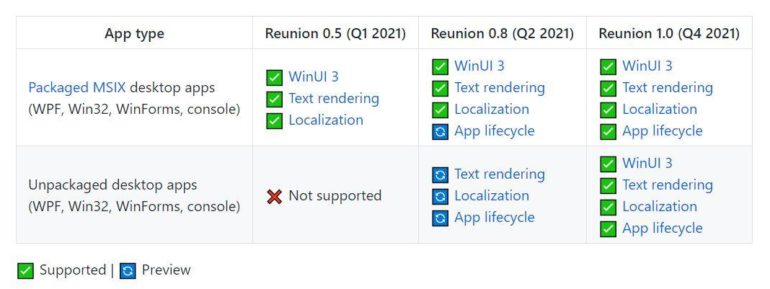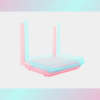Microsoft is making slow but steady progress toward bridging the Win32 and Universal Windows Platform (UWP) divide. Today, March 29, officials announced that Project Reunion has hit the 0.5 milestone, with the 1.0 release set for Q4 2021.
Project Reunion is aimed at getting Windows developers to build true “Windows apps” that will work on all Windows 10 PCs by adding modern desktop elements to Win32 without users having to rewrite their apps. At Build in May 2020, Microsoft’s Windows Developer Platform team released previews of the first two official Reunion components: WinUI 3 and WebView 2. WinUI 3is the new native UI framework for Windows 10. WebView 2 is a control for integrating web content into an app.
The .5 Reunion release provides developers with access to WinUI 3, text rendering, and localization. Version .5 requires MSIX (even though the 1.0 release will not). Microsoft’s goal is for Project Reunion to work on all supported versions of Windows; it currently supports Win 10 1809 (the October 2018 Update) and newer only.
“We aim to grow Project Reunion to provide a modern, simple, and accessible version of much of the power of the Windows Application Platform,” the team explains in its README documentation on GitHub.
“As your app uses more Project Reunion functionality it’ll be ready for additional targets such as packaging, identity, AppContainer, and other future Windows Editions. Depending on Project Reunion APIs means we take on the work to keep these APIs working as Windows evolves forward. Staying within the Project Reunion API surface ensures your app can address the widest range of Windows editions and releases while using up-to-date functionality.”
Microsoft is counting on Project Reunion to help the company undo some of its past mistakes it created with its “Universal Apps/One Windows platform strategy,” which expected UWP to supplant Win32 and for developers to do some heavy lifting to bring their existing apps to that platform. When Windows 8 fizzled and developers balked at moving to UWP, Microsoft officials shifted gears.



